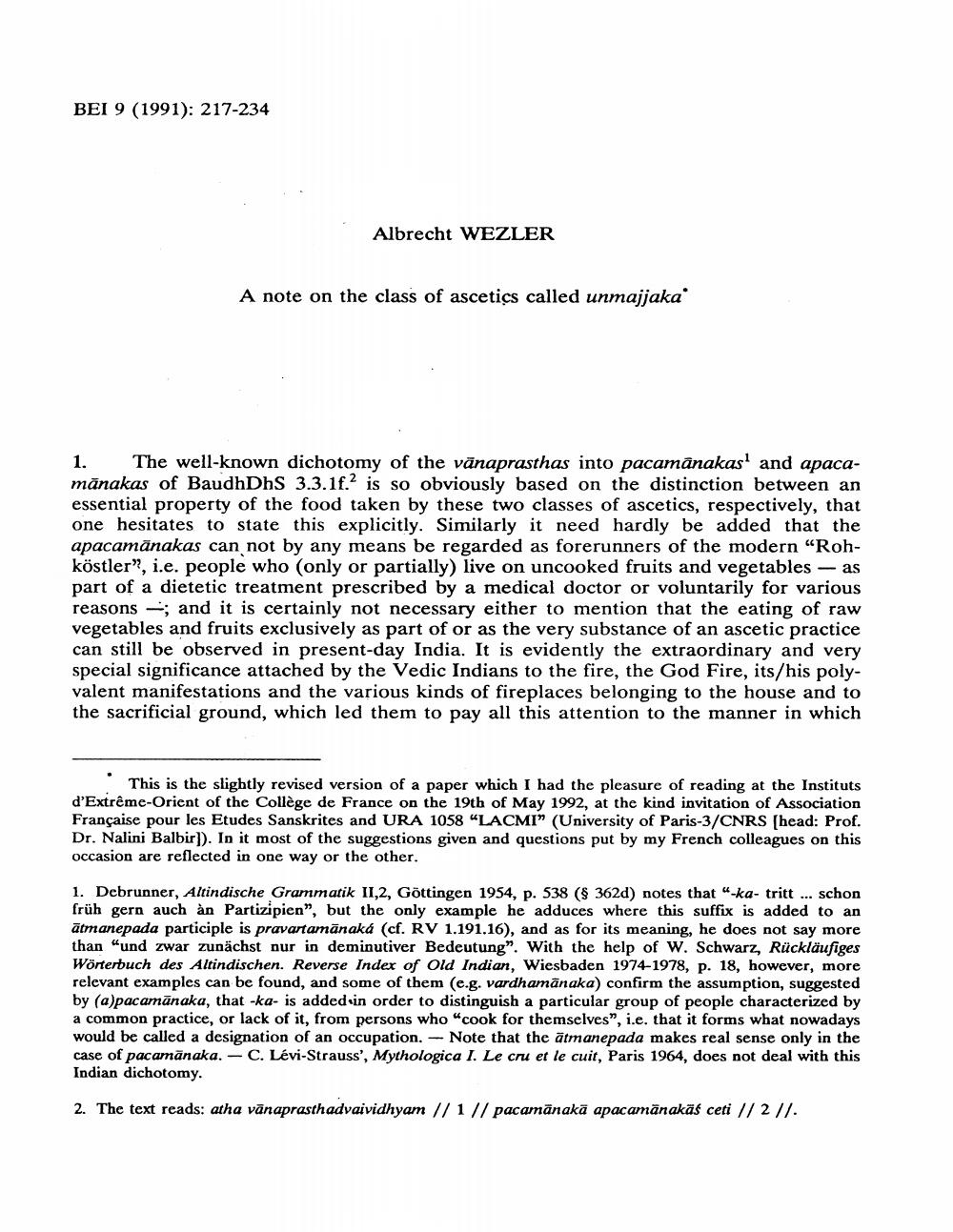Book Title: Note On Class Of Ascetics Called Unmajjaka Author(s): A Wezler Publisher: A Wezler View full book textPage 1
________________ BEI 9 (1991): 217-234 Albrecht WEZLER A note on the class of ascetics called unmajjaka 1. The well-known dichotomy of the vänaprasthas into pacamānakas' and apacamānakas of BaudhDhS 3.3.16.2 is so obviously based on the distinction between an essential property of the food taken by these two classes of ascetics, respectively, that one hesitates to state this explicitly. Similarly it need hardly be added that the apacamānakas can not by any means be regarded as forerunners of the modern "Rohköstler", i.e. people who (only or partially) live on uncooked fruits and vegetables - as part of a dietetic treatment prescribed by a medical doctor or voluntarily for various reasons — and it is certainly not necessary either to mention that the eating of raw vegetables and fruits exclusively as part of or as the very substance of an ascetic practice can still be observed in present-day India. It is evidently the extraordinary and very special significance attached by the Vedic Indians to the fire, the God Fire, its/his polyvalent manifestations and the various kinds of fireplaces belonging to the house and to the sacrificial ground, which led them to pay all this attention to the manner in which This is the slightly revised version of a paper which I had the pleasure of reading at the Instituts d'Extrême-Orient of the Collège de France on the 19th of May 1992, at the kind invitation of Association Française pour les Etudes Sanskrites and URA 1058 “LACMI" (University of Paris-3/CNRS (head: Prof. Dr. Nalini Balbir]). In it most of the suggestions given and questions put by my French colleagues on this occasion are reflected in one way or the other. 1. Debrunner, Altindische Grammatik 11,2, Göttingen 1954, p. 538 (8 362d) notes that "-ka- tritt ... schon früh gern auch an Partizipien", but the only example he adduces where this suffix is added to an ātmanepada participle is pravartamānaká (cf. RV 1.191.16), and as for its meaning, he does not say more than "und zwar zunächst nur in deminutiver Bedeutung". With the help of W. Schwarz, Rückläufiges Wörterbuch des Altindischen. Reverse Index of Old Indian, Wiesbaden 1974-1978, p. 18, however, more relevant examples can be found, and some of them (e.g. vardhamanaka) confirm the assumption, suggested by (a)pacamānaka, that -ka- is added in order to distinguish a particular group of people characterized by a common practice, or lack of it, from persons who “cook for themselves", i.e. that it forms what nowadays would be called a designation of an occupation. - Note that the ātmanepada makes real sense only in the case of pacamānaka. - C. Lévi-Strauss', Mythologica I. Le cru et le cuit, Paris 1964, does not deal with this Indian dichotomy. 2. The text reads: atha vānaprasthadvaividhyam // 1 // pacamānakā apacamānakās ceti // 2 //.Page Navigation
1 2 3 4 5 6 7 8 9 10 11 12 ... 27
